Pawscessories is reader-supported. When you buy via links on our site, we may earn an affiliate commission at no cost to you.
Learn more.
Unfortunately, there are times we must leave our pups unattended. Crating can be the easiest way to make sure they don’t get into trouble and to keep them safe.
But how long can you ethically leave your pup unattended in a crate? How long should a dog be in a crate?
In this article you’ll discover exactly how long you can leave your dog in a crate. And you’ll also learn:
- How long a dog can stay in a crate overnight or without water.
- How long can you leave puppy in crate
- 6 specific tips to help get your dog loving their crate
- 7 reasons you shouldn’t leave your dog in a crate
- And much more…
Lets jump in.
Table of Contents
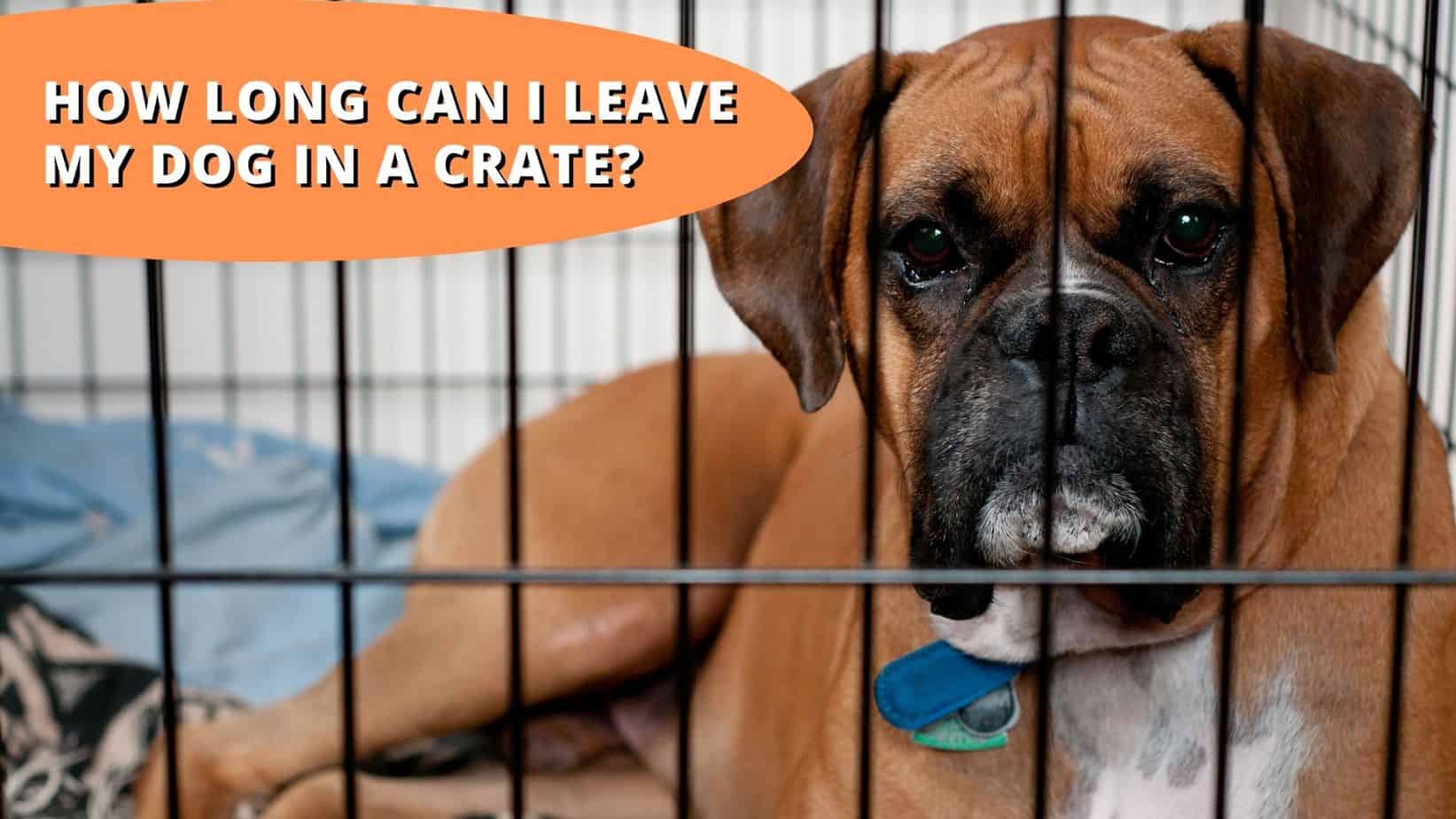
How Long Can A Dog Be In A Crate?
Adult dogs shouldn’t be left for more than 8 hours in a crate during the day. Puppies under 6 months shouldn’t stay in a crate for more than 3 or 4 hours at a time. Leaving a dog in a crate should be limited based on how long they spend in their crate daily, their age, and level of house training.
Note: Experts at the Humane Society say a dog who’s crated all day and night doesn’t get enough exercise or human interaction and can become depressed or anxious.
So make sure to adjust your schedule, hire a pet sitter or take your dog to a daycare facility if you need to reduce reduce the amount of time they spend in their crate each day.
How Long Can A Dog Stay In A Crate Overnight?
Depending on the dog’s age, most can stay in crates overnight for 10-12 hours. Adult and senior dogs are able to hold their bladder and sleep rather long. Puppies 3 months and younger will need potty breaks every 4-6 hours but can usually hold it longer at night.
The biggest factor in determining how long your dog can stay in a crate overnight is their ability to hold their bladder, their age, and the routine you’ve set for them.
If your dog is used to going in their crate overnight for 8 hours, extending how long they are crated might cause them to become stressed and anxious.
Sticking to a routine, training them to enjoy their crate, and making sure their needs are met outside of their crate will make crating them overnight easy!
Also, it’s a good idea to keep the crate close to your bedroom at first, especially if you have a puppy.
A good rule of thumb is to match your bedtime routine with your dogs. Crate your dog when you go to bed, and let them out when you wake up.
Further Readings: What To Do When Your Dog Barks In Their Crate At Night
How Long Can You Leave A Dog In A Crate Without Water?
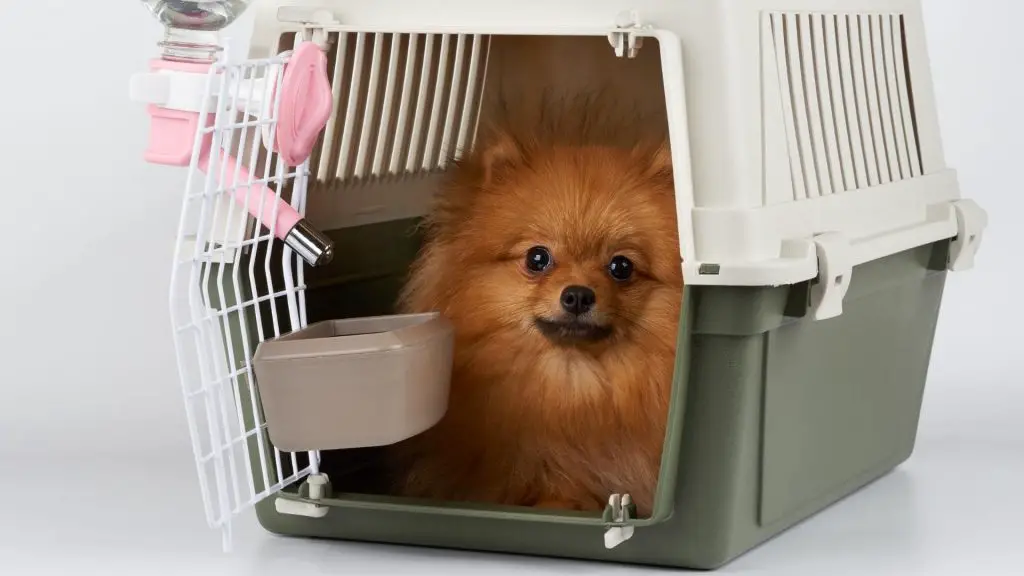
Dogs can survive approximately 2-3 days without water but may experience ill effects after 10 hours without water. Water is a “primary resource” – which means it is necessary for survival. Thus, dogs should not be left in a crate without water for longer than 10 hours.
It is important to note that just because they can survive without water for 2-3 days doesn’t mean it’s something they should be subjected to.
Experts say dehydration can negatively affect all the processes in a dog’s body. This is why providing dogs with a constant supply of clean water is important to their wellbeing.
There are a few exceptions to this.
For example, if your pup is struggling to hold their bladder throughout the night, it’s okay to remove access to water before they go to bed.
This should only be done if they had adequate access to water throughout the day (which they should always have).
All dogs are different and require different amounts of water so keep this in mind. A good rule of thumb is dogs need an ounce of water for every pound of body weight.
So, a 50 lbs. dog needs about 50 oz. of water (or 6 cups), while a 75 lbs. dog needs almost 2 liters of water every day.
Is It Cruel To Crate A Dog While At Work?
You should not crate your dog while working if you are gone for 8-12 hours in the day. If you have a part time job and are at work for 4 hours, it is ok to crate your dog during this time.
So Is it cruel to crate your dog while working?
It depends on: How long you are working, the average total length of time per day they are crated, how much exercise and socialization your dog gets daily, and the dog’s age, temperament and disposition.
If you’re crating your dog while you’re at work all day and then crating him again all night, it’s too much.
Crating too much is a quality of life issue for your dog, and his physical well-being and emotional well-being must be considered when deciding how often to crate.
If you have a full time job and are gone 8-12 hours you should not crate your dog. This is far too long in the day to be confined to a small space.
They will likely get bored, try to break out and develop nervous habits.
You also want to make sure they are getting enough exercise and socialization daily, especially if you are crating them for extended periods of time.
Lastly, this should be no surprise. Puppies in particular, should not be left alone in crates while parents go to work, especially in the early stages of development.
They need potty breaks every 3-4 hours and socialization matters most in these early stages of life.
Studies have shown crating puppies for too long can have a negative impact on their development and lead to anxiety and depression.
Further Readings: Are Dog Crates Humane? (Important Facts)
6 Tips To Help Your Dog Love Their Crate

Crates are a great tool for dog owners to help house train their puppy.
However, it would be a mistake to randomly bring home a crate and expect your dog to be comfortable spending 6-8 hours home alone in their crate.
Many dogs learn to love their crate because it gives them a sense of security and safety but this typically needs to be taught.
It can instinctively remind them of sleeping in a den like dogs used to do before they were domesticated.
When you’ve adequately trained your dog to stay in their crate, their time spent inside will be enjoyed rather than dreaded when you leave home.
Here are 6 tips I learned from experts to train your dog to love their crates.
1) Start Slow
Introducing your dog to their crate should be a slow and fun process for them. Expecting them to be happy sitting in a crate four a few hours a day without any introduction is a mistake.
Ease your way into the crate and allow them to wander in by themselves. Once they have done so lock them in, walk away for a minute or two, then go back to let them out.
Make sure they are not whining when you let them out or they will develop a habit!
Repeat this process slowly over time increasing the duration to allow them to adapt.
2) Make It A Happy Place (Use Toys / Treats)
The American Kennel Club emphasizes the importance of slowly introducing them to the crate but also the importance of making it a place of enjoyment for them.
The goal is to make them associate the crate with positive emotions. What better way than to incorporate the crate into their favorite activities.
Some ideas here would be to feed your dog in the crate, throw treats inside, or letting them play with favorite toys in their crate.
Incorporating the crate into fun activities with positive rewards will make the crate a place they start to enjoy.
Anytime they go into the crate by themselves reward them with a fav toy or treat.
3) Avoid Using It For Punishment
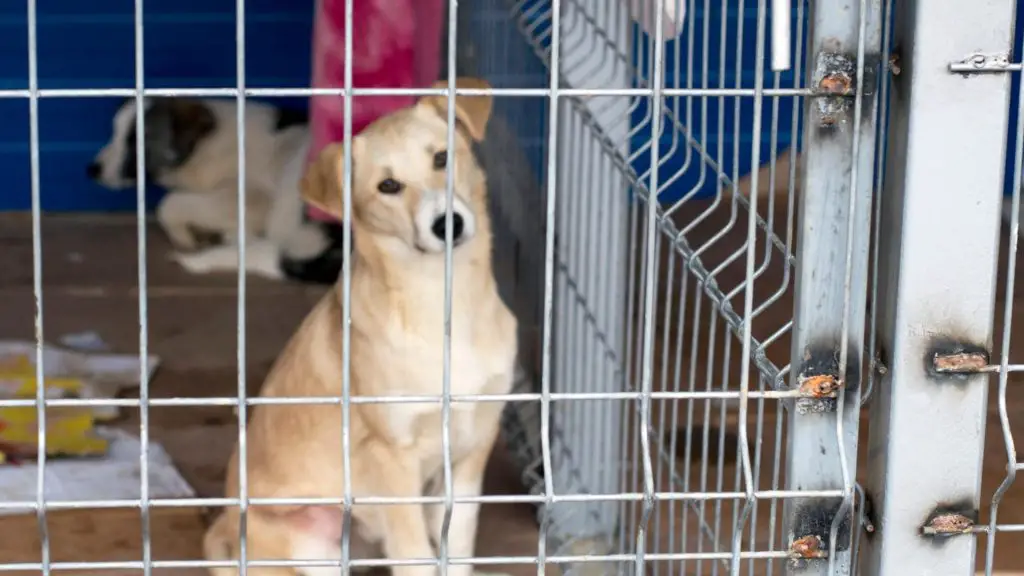
An often response dog owners make when their pups misbehave is to crate them. The problem here is you associate the crate with a negative experience.
Instead look to punish them with an alternative to their crate.
What we did with our pup Enzo was we sectioned off a part of our kitchen so whenever he misbehaved we would isolate him there.
We used these little gates to block off an area we knew he could not get into trouble and made sure his crate remained his little sanctuary.
4) Try Covering Your Crate
This is a trick that depends on your dog since every dog is different. Some dogs like being able to see what is going on around the crate since it makes them feel less isolated, others prefer it covered so they can sleep better.
This is something you can test with your dog to see if they respond differently when the crate is covered vs open.
This will help create a space your dog prefers.
Further Readings: Do You Put A Blanket Over A Dog Crate – Pros and Cons
5) Keep The Crate Close To You
Dogs are social animals so crating them can feel like isolation at first. A strategy to help avoid this from happening is by keeping your crate close by to all the action going on in your house.
Throughout the day having their crate by the main family room can make them feel less isolated even when in their crate.
It also gives them their own private space they can call their own, should they want to go lie down alone.
Also a good idea when you go to bed is having the crate close by at first and then slowly move it further away till they start to really love their crate.
Further Readings: Where Should I Put A Dog Crate In My House
6) Always Leave It Open
This last tip is pretty straight forward. Always leave their crate accessible to them.
You want them to feel like it’s their own little place. In order to do so they need to have access at all times.
7 Reasons You Shouldn’t Leave Your Dog In A Crate
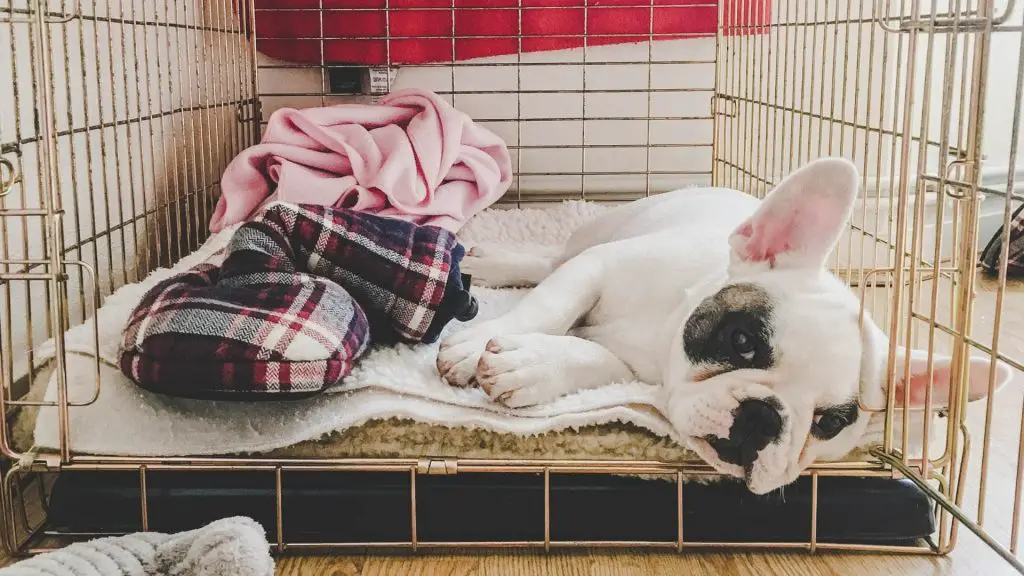
1) Your Dog Hates Their Crate (They’re Afraid Of It)
If your dog is not properly trained to like their crate, it may give them anxiety and depression, experts say. It can feel to them like solitary confinement.
If their association to their crate is negative this can lead to issues moving forward if you are constantly crating them.
The solution here is to re-develop their association with the crate before ever leaving them in it again.
A big sign your dog hates their crate is fear. If they are scared to go into the crate it’s likely they do not like it.
If they pant excessively, pace inside, drool, or look uncomfortable. It’s likely they are anxious and experiencing some anxiety about being in the crate.
2) You Have A Pet Mill Or Pet Store Puppy
Experts at Peta (People for the Ethical Treatment of Animals) have found that Pet store and puppy mill puppies, who are born and raised in crate-like structures, tend to be difficult to housetrain, and they may experience severe anxiety and develop fearful and/or destructive behavior if they are confined to crates.
They may even injure themselves while trying to bite or scratch their way out.
For this reason, if you know your pup came from a pet mill or pet store they might have some extremely negative associations with crates.
It recommended that these dogs be trained in alternative methods. So if you must leave your dog, it’s advised to look into some alternatives to crating (check out recommendations below).
3) You Will Be Gone For Over 8 Hours (Except For Sleeping)
As suggested by countless experts and studies, adult dogs shouldn’t be left for more than 8 hours in a crate during the day.
Puppies under 6 months shouldn’t stay in a crate for more than three or four hours.
The only exception is during the night in which most dogs can be left in their crates for a little longer to sleep at night.
This depends on the age of the dog but as a rule of thumb it’s best to never leave them in a crate longer than 8 hours during the day and 10-12 hours during night.
4) When You Are Angry With Them Or For Selfish Reasons
Never should you crate your dog and leave them when you are angry with them. Punishing them using their crate is never a good idea.
This builds a habit of them associating crating to punishment. This will make it difficult for them to want to be in their crate.
5) When The Temperature Is Very Hot Where They Are Crated
Avoid leaving your dog in their crate if the temperature and environment is too hot. Especially if you do not leave access to water in their crate.
This can lead to dehydration or heat stroke.
Make sure if you are going to leave them, the temperature and environment are ideal conditions.
6) Longer Than They Can Hold Their Bladder
You should not leave your dog in a crate for longer than they can hold their bladder. If you are finding your dog is peeing or pooping in their crate, it’s likely they are being left for too long.
Puppies need constant bathroom breaks. That is why you should never leave your puppy in a crate longer than 3-4 hours since that’s the frequency in which they will need to potty.
This is similar for older dogs that cannot hold their bladder as long as younger adult dogs.
7) If There Are Better Options
Another reason you shouldn’t leave your dog in a crate is because there might be better options!
If you need to leave your dog for an extended period of time that is longer than what is recommended, look into alternatives in order to maintain your pups wellbeing.
4 Alternatives To Crating Your Dog When You Leave
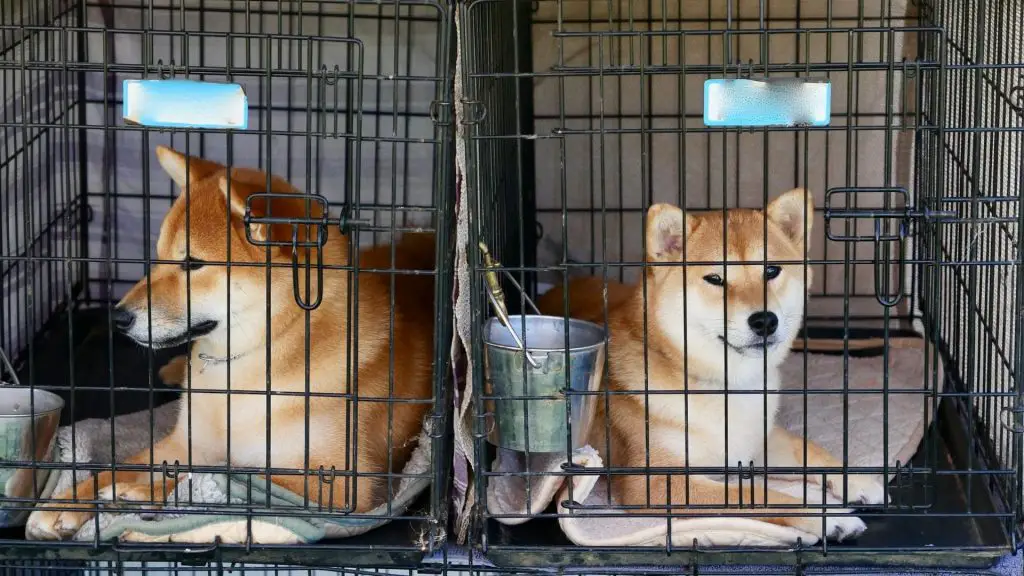
1) Doggy Daycare
If your dog loves other dogs a doggy daycare might be a great option. At daycare your dog can learn how to socialize, be around people, and would return exhausted at the end of the day.
You also have the option to opt into dog training since many daycare programs offer this as a service.
This can be a great way to keep your dog stimulated and happy while also training them to be a better dog.
2) Dog Walkers
If doggy daycare is too expensive or your dog is not the best with other dogs, hiring a dog walker is another alternative to crating them all day.
It can be a cheaper alternative to doggy daycare and can give your dog the needed exercise and activity during the day when you are not able to be there.
Having a trusted walker can be great for letting them out of their crate midway through the day while you work, or even if you plan to go away and can’t bring your pup.
3) Dog Proof Rooms
Dog rooms are another great alternative to crating your dog during the day.
If your dog doesn’t have a habit of destroying the entire house this could be a great option. Select an area of your home and section it off to create a nice space for them to be.
It’s best if these rooms have some windows and access to natural light.
Just make sure they have the ability to get out of the sunlight if they choose. You don’t want your dog overheating while you are away.
Throw in some indestructible toys and the extra space and freedom to move will be much appreciated by your pup.
Further Readings: Dog Crate Vs. A Room (Which Is Best For Your Dog)
4) Dog Yards
If you have a backyard, you can turn it into a place that is safe and enriching for your dog.
Of course, you’ll want to make sure it’s a secure backyard with little risk of your dog escaping or being harmed.
You will also want to make sure your dog wouldn’t be one to get up to trouble or swallow something that could harm them.
If your dog tends to bark at everything, chase animal life, dig to escape, eat everything and anything etc.
You’ll want to consider these things along with the condition of your backyard before deciding if this is the best option for you.
Your dog will be much happier and healthier if they get to walk around, play, and explore in your yard during the day rather than spending it stuck in a crate.
Other posts you might find interesting:
How To Make A Dog Crate Escape Proof | Simple Tricks
The 27 Best Dog Crates For Small Dogs And Puppies
10 Best Dog Crates for Separation Anxiety: The Ultimate Guide
